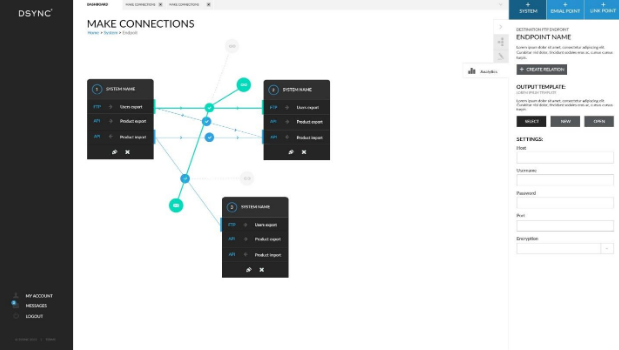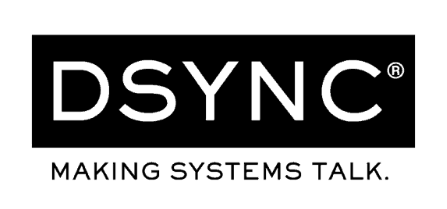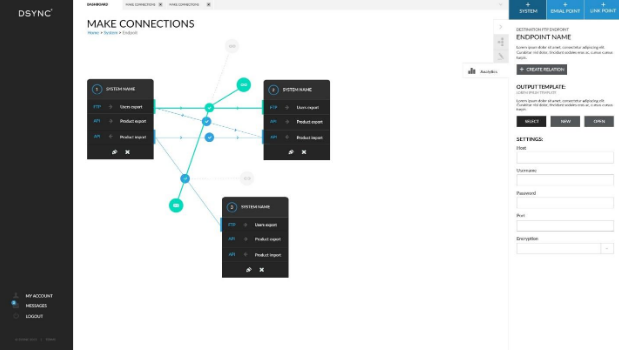DSYNC: The Best Cloud Data Integration Solution
Cloud integration is the newest way to collaborate in the online business world. It is essentially a system of technologies and tools brought together to connect different repositories and applications for sharing and exchange. The combined data thus acquired is then integrated on the cloud platform. This is done to make the uploaded data accessible by multiple users on multiple devices.
Modern-day industries are all built on the cloud integration platform in order to maintain a very healthy and user-friendly work process. Though most of the major business entities use their own custom-made system for cloud integration and access, startups and certain other small companies depend on ready-made options available in the market.
One of those readily available cloud integration tools is the DSYNC. In fact, it is one of the best available options thus far as pointed out by the rave DSYNC reviews.
But before we know more about DSYNC reviews and popularity score, let’s note down certain importance of a cloud integration platform and why we need it in the first place.
The reasons behind using a cloud integration tool
The thumb rule behind the creation of cloud integration was to create an easy way to break down to the business processes and improve the overall visibility, connectivity and optimisation. It has been a result of the need for businesses to come up with something that would allow them to share data through a unified medium.
This cloud integration is mostly done through a SaaS-based platform and this trend has been ever increasing. However, it is also to be considered that the bigger and well-established companies also use the SaaS platform but with a high-level of customisation with that of the on-premise structure applications. This itself brings a high requirement for certain progressive options.
How does DSYNC fit the bill here?
The kind of DSYNC reviews and response that has been garnering since its inception is quite notable. It works more than just a cloud integration system by being a business intelligence tool too. The first and foremost thing to notice here is the web-based dashboard, which is very user-friendly and easy-to-use.
Here are some of the well-known and important features that come on with DSYNC
- Based on great DSYNC reviews, it is a fully customisable tool and the business can use it the way they want to by configuring it with JSON, XML, etc.
- It is a bi-directional connectivity tool, with the help of which the users can post, push, pull and send data to and from multiple sources within the network band.
- It can extract data from multiple applications and place them in a unified format (say CSV) that helps in analysis and reporting.
- The configuration of the setup is the most simple you would see anywhere as it moves away from coding to a graphical interface with a drag and drop mapping.
- It provides live updates and data sync in real-time, or on a specific scheduled time.
- To make the usage and analytics reporting easier, the users can set calculations and formulas.
- The users can also configure DSYNC with a plethora of APIs for various purposes like setting functions, data orchestration, connecting multiple endpoints, etc.
- The data presented to the admin comes in many formats and can be structured depending on the kind of system used. So the users can switch to a preferred format that can be accepted at the destination endpoint.
- It offers certain other operational features like previewing functions for synchronisation, transforming the product data, fetch from FTP or Webservice.
What are the benefits of DSYNC cloud integration platforms?
Besides just the DSYNC reviews, newer companies can consider finding more about cloud integration and see what benefits it brings to the entire process.
- As highlighted by many of the DSYNC reviews by the existing users, it helps in improving the operational efficiency of the management.
- It brings a more prompt time-to-market for a more profitable business process.
- The scalability and flexibility with the setup and customisation are immense.
- As the system is known for, it allows better communication within the internal management.
- It reduces the operational cost by a huge margin, only to make the business process a more lucrative entity.
What else you need to know?
Cloud data integration is a much more complex service than one would understand on the very first instance. The basic form of integration basically addresses two different components of the business.
Data integration: Data integration is the first step towards cloud integration. It synchronises data in the cloud for multiple access and has a very strict connection.
App integration: Application integration is more than just data synchronisation and works by connecting various apps that would assist the management in running a smooth process.
Hence, data integration is a wider concept that just mere sharing with a group of users in a closed circle. It is much like an iPaaS (integration platform as a service) and gives the business processes the leeway to excel in the management, thereby improving the agility and scalability of the process.







